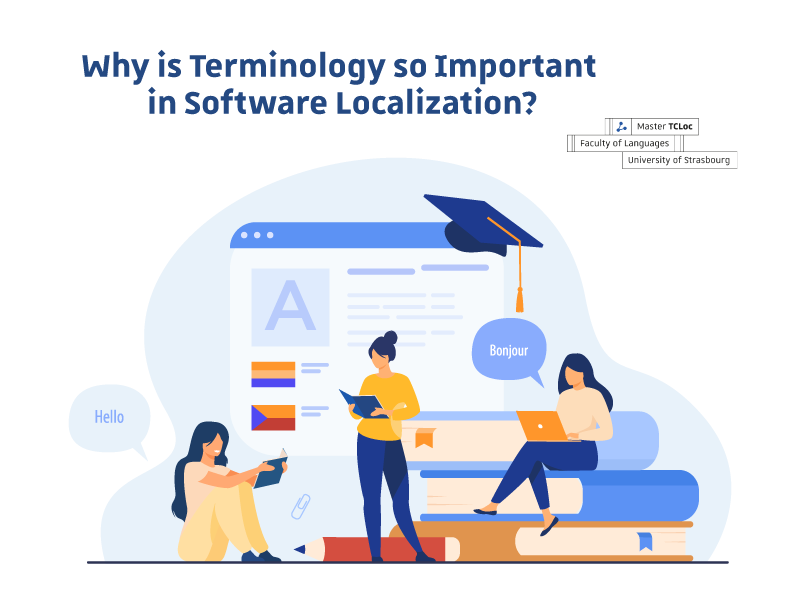With software still “eating the world”, as Marc Andreessen was already describing back in 2011, it is very necessary to facilitate software localization so you can sell your products in countries across the globe. One of the most common ways to do this is to engage a language service provider (LSP). So, you choose a reputable LSP and hand your source files over to them. Does that mean that your multilingual software localisation project will be a success? The answer is no. Unfortunately, many technology startups have fallen into the trap of starting software localization without doing essential preparation work, something that is vital to avoid extensive revisions later on. One major aspect of this advanced preparation work is terminology management using an appropriate terminology management system. Using a terminology database helps ensure consistent translations.
Without terminology management, terminology errors will find their way into the end result, meaning that many corrections will need to be done. This costs a lot of time and money compared to cases where terminology management is applied from the beginning. What’s more, this correction work will increase exponentially if your software is going to be translated into multiple languages. Not only is this costly, it can also lead to a loss of trust among customers – a sloppy translation is not a good look for your company. Terminology is therefore key to successful software localization.
The Function of Terminology in Software
The biggest difference between software documentation and literary works is that software documentation places a lot of importance on consistent terminology. For example, if you are reading a novel, the main character might be sometimes described as a loving father and other times as a tyrant. In software, however, a system administrator must always be a system administrator. If you change the name of the person who performs a certain operation, then readers might think that the operation is performed by someone else. Thus, the role of terminology is to provide consistency so that readers know exactly which concept a given term is referring to.
Choosing Software to Manage your Terminology Database
So, what kind of software should you use for your terminology database? Here are some of the most commonly used ones:
If you’re already using a CAT tool such as SDL Trados or memoQ, you may want to use its integrated terminology management system. These offer translators and translation project managers many more features than something like an Excel file, which was unfortunately the common solution in localization for a long time.
How to Add Terms to a Terminology Database
When you add terms to a terminology management system, make sure you follow these best practices:
- Store terms in their base form.
- Remember that terms should remove ambiguity.
- Save terms with as much metadata as possible to guide linguists in deciding which term to use and when.
- Ensure that you keep the termbase up to date.
Some LSPs will help build your terminology database for you, so it is a good idea to ask them for assistance.
Conclusion and Next Steps
You now know that terminology preparation is not something that needs to be tedious and costly – it is an investment in establishing a process that will maintain translation quality and reduce rework in the future. If you want to learn more about terminology management, check out this free online training from Trados. In addition, the TCLoc Master’s program has experienced instructors who can teach you what you need to know about software localization, terminology management and many other topics. Read more about the application requirements and the program format. Submit your application now! Intakes are available in January and July.



